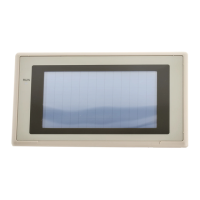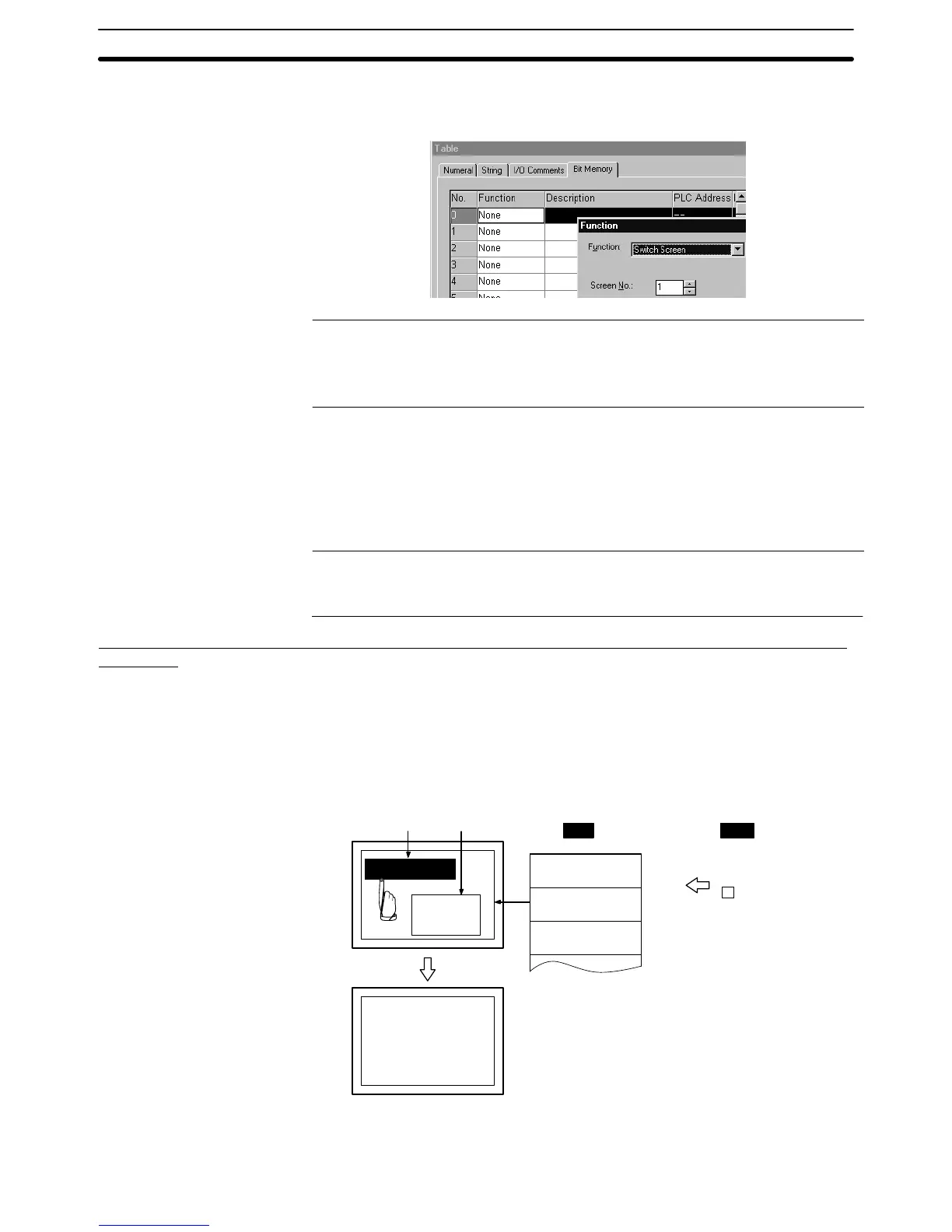3-3SectionScreen Display and Notification
302
The screen numbers that can be specified are:
• 0001 to 3999: Screen No. 1 to No. 3999
Reference: To display overlapping screens, specify the screen number of the parent
screen.
The screen is not switched if elements have not been registered to the speci-
fied screen number.
Operation
1, 2, 3... 1. Set the bit in the host allocated for the bit memory table entry with the Switch
Screen function to 1 (ON) when switching the screen.
2. After making sure that the screen has been changed over from the data by
referring to the screen switch setting word in the PT status control area or
other data, return the bit in the host to 0 (OFF).
Reference: The screen of the PT is switched at the timing the status of the bit allocated for the
bit memory table entry is changed from 0 (OFF) to 1 (ON). Please note that the
screen is not switched if it is changed from 1 (ON) to 0 (OFF).
Switching the Screen Using the Screen Switching Function of the Alarm List/History
Function
This method allows the screen to be switched to the screen corresponding to the
message displayed by the alarm list/history function.
The alarm list/history function monitors bits in the host via a bit memory table
entry. If the specified bit in the host is turned to 1 (ON), the function displays the
corresponding message (character string memory table entry) or image data/li-
brary data. The function can also switch over the screen to a specified one.
1 ← 1(ON)
No. 9
PT
PC
Message and image/library data that
correspond to bit memory table entry 10
Image
library
data 10C5
Touching the message changes
over the screen to the one set in
the bit memory table entry
Screen No. 121
Allocated bit (bit table entry 10)
Character string table 50
Image library data 124A
Screen No. 100
Character string table 32
Image library data 10C5
Screen No. 121
Character string table 54
Image library data 13CA
Screen No. 65
No. 10
No. 11
Character string
memory table entry 32

